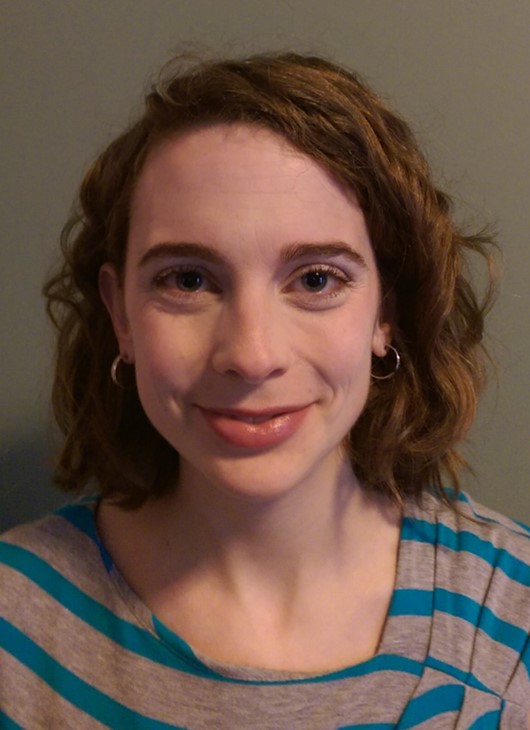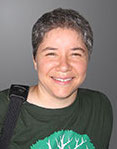Differentiating Instruction with Parallel Tasks
by Sarah Lonberg-Lew & Melissa Braaten
One of the biggest challenges we face teaching math in adult education classes is having students who vary widely in their readiness, prior knowledge, and reasoning ability. Ask a question of your whole class and some students will have their hands up with the answer before others have made sense of the question. The situation often feels intractable – how can you keep all your students in that sweet spot of being challenged without being frustrated, and feeling confident without being bored? The two-word answer is: differentiate instruction – teach the same material to multiple levels at the same time. However, it’s easy to say, but hard to do.
Luckily, the math concepts that we teach in our classes can and should be taught at multiple levels. Fractions and data are not one-time topics, but rather ideas that should be returned to and deepened as students move through the levels. Geometry, measurement, and proportional reasoning are threads that run through the whole curriculum. Algebraic reasoning can begin to develop at the lowest levels and continue to grow. But how do we address these topics at multiple levels, all at the same time, and in the same classroom?
One useful strategy to differentiate instruction is to use parallel tasks. These are pairs of questions or tasks that address the same big idea, but at different levels of difficulty. Students can choose between the tasks or even do both if they are so inspired. Struggling students can build confidence by experiencing success with a more accessible task and faster-moving students can be challenged with a more sophisticated application. After completing the tasks, the class can come back together to discuss the overall big idea that was at the heart of both tasks. In addition to being an activity where students are neither bored nor overwhelmed, parallel tasks also contribute to student confidence by giving them a degree of agency in their education. Choices are empowering.
One way to create parallel tasks is to change the numbers involved in the problem. The chart below shows some characteristics that make numbers more accessible or more challenging to work with:

Here is an example of a pair of parallel tasks that uses this approach:
Task 1 (More accessible):
To make homemade toothpaste, Tanya mixes 2 teaspoons of water with 8 teaspoons of baking soda.
Juan mixes 4 teaspoons of water with 10 teaspoons of baking soda.
Will both mixtures have the same consistency? Why or why not?
Task 2 (More challenging):
The pool regulations call for 11 oz. of chlorine to be added daily for every 10,000 gallons of water in the pool.
The East Bush Pool contains 25,000 gallons of water. The pool technician added 33 oz. of chlorine for the day. Did she add too much, too little, or just the right amount of chlorine to the pool? How do you know?
Notice that in this example, both tasks get at the big idea of determining whether two ratios are equivalent, even though the contexts are not the same. It’s okay to use different contexts as long as all students are working on the same concept.
Another factor that affects the difficulty level of a problem is the number of steps it takes to solve. Problems which require many different steps will also require more planning, organization, and strategic thinking on the part of the student and will usually be more challenging. Yet another factor is familiarity — a problem can be more or less challenging for students depending on whether or not it relates to their personal experiences or knowledge.
Below is an example of parallel tasks that have different levels of complexity. Both tasks address the concept of comparing unit rates. While both tasks involve calculating and comparing unit rates, the second one requires students to make decisions about unit conversions before calculating unit rates.
Task 1 (More accessible):
Marianne ran 100 meters in 20 seconds.
Tony ran 200 meters in 50 seconds.
Who is faster? How much faster?
Task 2 (More challenging):
Marianne biked 50 miles in 3 hours and 20 minutes.
Tony biked 75 miles in 4 hours and 10 minutes.
Who is faster? How much faster?
There are no hard and fast “rules” about how to use parallel tasks. As one teacher reflected on her experience using parallel tasks in her classroom:
“I offer both options and let students choose. Sometimes I say which is more challenging, sometimes I don’t. If someone does the easier one quickly, I ask them to try the other as well. If someone tries the harder one and gets stuck, I suggest they do the other one first. Since people are self-differentiating, I don’t usually have any issues with self-esteem or buy in. I find it works quite well, especially for warm ups.”
Some valuable resources for teachers:
Marian Small has a series of books called Good Questions: Great Ways to Differentiate Mathematics Instruction which contain both open questions and parallel tasks as well as advice for implementing them in the classroom.
Good Questions for Math Teaching, Grades 5-8: Why Ask Them and What to Ask by Lainie Schuster and Nancy Canavan Anderson also contains many great ideas for open questions and others that could be used as parallel tasks.
====================================================
Sarah Lonberg-Lew has been teaching and tutoring math in one form or another since college. She has worked with students ranging in age from 7 to 70, but currently focuses on adult basic education and high school equivalency. She teaches in an adult education program in Gloucester, MA. Sarah’s work with the SABES PD Center for Mathematics and Adult Numeracy at TERC includes developing and facilitating trainings and assisting programs with curriculum development. She is the treasurer for the Adult Numeracy Network.

Melissa Braaten is an adult education instructor in the Greater Boston area. Melissa has taught ASE and pre-ASE math and reading, as well as ABE writing, computer skills, and health classes. Melissa also is a training and curriculum development specialist for the SABES PD Center for Mathematics and Adult Numeracy at TERC.

